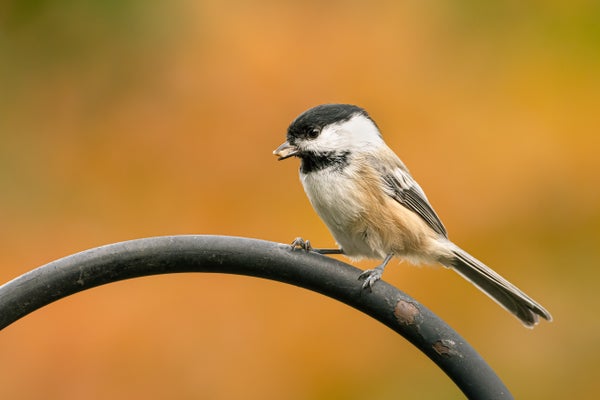Chickadees Use Brain-Cell ‘Barcodes’ to Remember Where They Stashed Their Snacks
Unique patterns of neuron activation help tiny birds catalog thousands of scattered food caches
Black-capped Chickadees don’t let food go to waste. These puffy little birds, with their oversize head and dark eyes resembling those of a Beanie Baby, are always hoarding extra grub such as berries, seeds and insects. A single bird of this species stores its surplus in thousands of hiding spots throughout the forest to make the sustenance ready for times of scarcity.
“When [a chickadee] hides a seed, it forms a memory of where the seed is, which it can later use,” says Selmaan Chettih, a postdoctoral researcher who studies these birds’ neural activity at Columbia University. And that memory is extraordinarily precise: chickadees can pinpoint the location of their scattered food caches down to the centimeter—and they remember which item they stashed in which spot.
So how do these birds store and use so many memories? In a new paper published on Friday in Cell, Chettih and his team were surprised to discover that Black-capped Chickadees activate unique barcodelike patterns in their brain when they hide and retrieve a food item. These neural “barcodes,” which have yet to be observed in any other species, may allow the birds to store and retrieve many similar memories without getting them mixed up.
On supporting science journalism
If you’re enjoying this article, consider supporting our award-winning journalism by subscribing. By purchasing a subscription you are helping to ensure the future of impactful stories about the discoveries and ideas shaping our world today.
Like mammals, chickadees and other birds form memories in their hippocampus. This brain structure—which is relatively large in food-caching birds—stores snapshots of past places or events. These isolated snippets, known as episodic memories, can be accessed later to recall certain experiences.
Read the full article here







